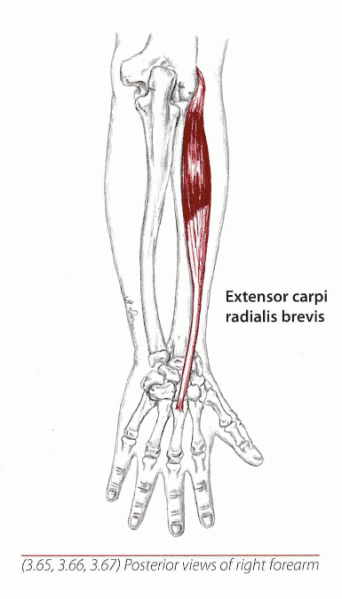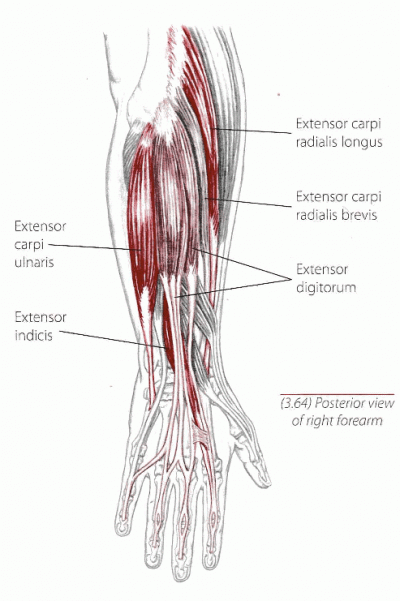Tennis Elbow
Tennis elbow, clinically known as lateral epicondylitis, is a tendonitis of the forearm extensor muscles. This group of four individual muscles attaches to the outer part of the elbow via a common tendon. They work together to extend the wrist and fingers and assist in forearm flexion. The most commonly affected muscle of this group is the extensor carpi radialis brevis (ECRB). Pain from tennis elbow is most acutely felt along the outer part of the elbow, known as the lateral epicondyle of the humerus. Pain and tenderness usually comes on gradually and can be present even at rest. It can also be further aggravated by simple tasks such picking up objects or opening doors. In chronic cases, your grip may weaken and you may feel the pain radiate down the forearm and into the wrist, or up into the shoulder.
Tennis elbow is considered a repetitive strain injury. Think of a tennis player repeatedly hitting the ball with a backhand stroke. The repetitive loading and pull of these muscles over time creates micro-tears in the muscle and tendon, which ultimately leads to inflammation. Poor conditioning and poor mechanics can greatly increase your chances of developing the condition. But tennis elbow is not limited to only tennis players. Basically anyone who uses their hands in a repetitive way such as musicians, chefs, painters, writers, carpenters and even massage therapists are all at risk. Writers for example may develop what’s known as “writer’s cramp.” The constant contraction of the forearm extensors in addition to the cocking of the wrist, will over time lead to muscle exhaustion and eventually irritation of the tendon.
Recent studies have also shown that a single event, such as a direct blow to the elbow or a sudden overloading of the muscles, can precipitate a sudden onset of tennis elbow. The counterpart to tennis elbow is golfer’s elbow, also known as medial epicondylitis. By contrast, golfer’s elbow causes pain along the inner part of the elbow where the tendons of the forearm flexors attach. A common diagnostic test to confirm the presence of tennis elbow is to extend the wrist and fingers back with an out stretched hand. Think of doing the “police stop sign.” If maintaining this position is painful or uncomfortable, you may have lateral epicondylitis.
Treating tennis elbow may involve a two-week period of rest and a complete cessation of the offending activity. Massaging the area with ice 2-3 times a day for approximately 15-20mins will help decrease inflammation. Some find using a compression brace on the forearm just below the elbow helpful in preventing a further pull on the epicondyle. After the acute stage has passed, gentle range of motion exercises along with myofascial release and trigger point work to the forearm muscles can be done. If after several weeks of rest one can perform ten pain free isometric contractions of the extensors muscles, one can begin resuming regular activity.


